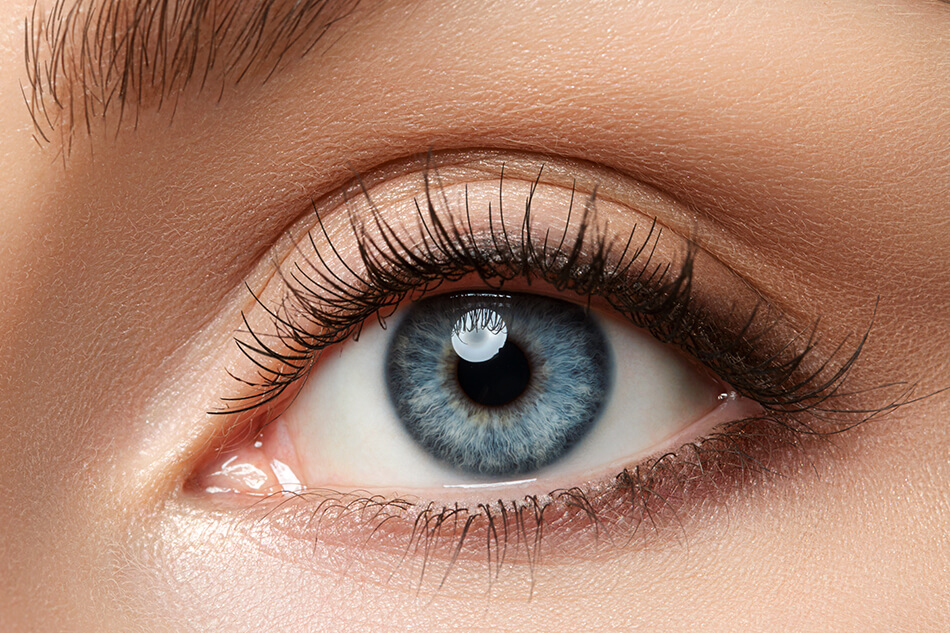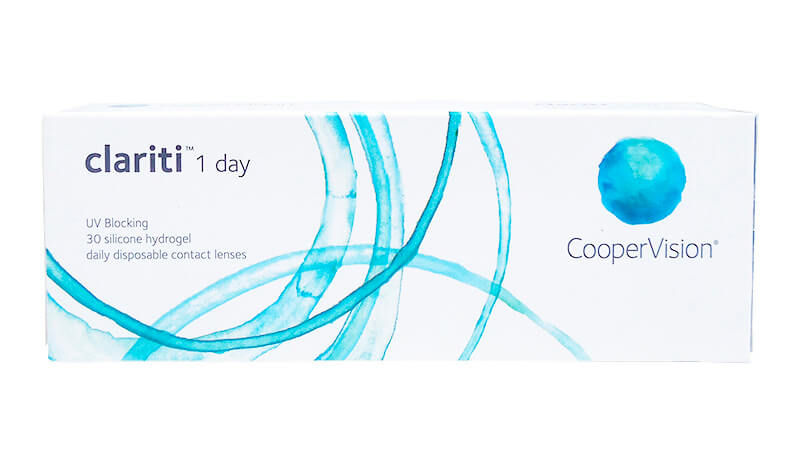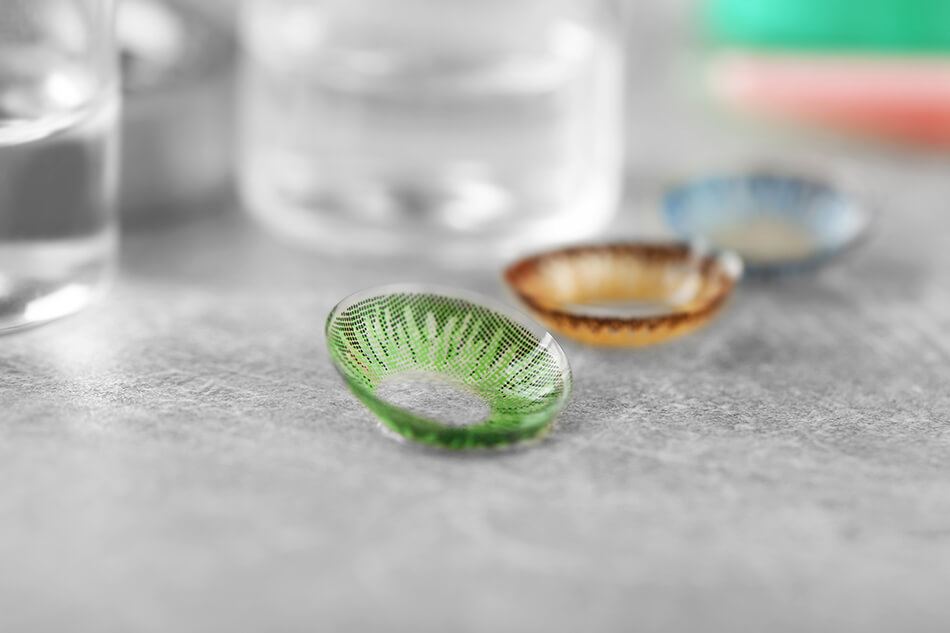To Choose the Best Prescribed Contact Lenses for You, Know the Basics First
Wearing prescribed contact lenses for the first time can be fairly daunting, especially for anyone who’s spent most of their life wearing glasses. Since there is a wide variety of contact lenses on the market, it's important to know what’s available and which options are best for you. For example, the best lens for you will depend on whether you’re addressing one eye problem or a combination of issues.
To help you sort it all out, let’s take a look at the basics - lens materials and design.

What Material is Used for Prescribed Contacts Lenses?
To begin with, there are five unique materials most commonly used when making a prescribed contact lens. The first lenses to hit the market in the 1970s were called "PMMA" lenses and were constructed from a rigid plastic material called polymethyl methacrylate. These original lenses were renowned for their optical quality. However, many individuals had a hard time adjusting to such a hard piece of plastic touching their eye. This type of lens is very rare now and is not really in circulation anymore.
Within a year or two of the introduction of PMMA lenses, "soft" lenses were introduced. Soft lenses used a newly synthesized plastic that had a high water content, making the material feel almost like a gel. Because these weren't nearly as hard as PMMA lenses, they could quickly adapt themselves to most eye shapes. This made them incredibly popular, that is until new innovations brought other materials to the forefront.
Gas permeable lenses, otherwise referred to as "GP" lenses were an offshoot of the older PMMA lenses, and were introduced in the early 1980s. The specially created compounds used to make GP lenses were porous, meaning that oxygen could freely pass between the lens and the wearer's eye. This also made them fit much more closely to an individual’s eye, dramatically increasing their comfort. While never quite as popular as some softer alternatives, the clarity of the optics adapted from the PMMA design has made GP lenses popular even today.
In an effort to combine the high-quality optical capacity of the PMMA lens with the comfort of soft lenses, "hybrid" lenses were released during the mid-1980s. These took a center core from the standard PMMA lens and surrounded it with a "skirt" of either soft silicone or other analogous material. While individuals have claimed that these are some of the best lenses produced, they've not grown much in popularity through the years. This is likely due to the difficulty in fitting them, as well as the high cost.
The new millennium brought more changes to the contact lens market, particularly with silicone hydrogel lenses. These are the most popular type of contact lens sold today. Combining the best of both worlds, silicone hydrogel lenses bring together the comfort of a soft lens and the gaseous permeability of GP lenses. This means that your eyes will get plenty of oxygen throughout the day for maximum comfort. Over half of the contact lens-wearing population in the U.S. uses this type. Clariti 1 Day by Coopervision is one of the silicone hydrogel lenses that we carry.

Timing Is Everything
Near the tail end of the 1970s, a major change occurred for wearers of the prescribed contact lenses. Up until this point, individuals simply had to remove their contacts every evening and clean them. This ended when "extended wear" contacts were introduced. Unlike the standard "daily wear" contacts that had been prevalent up until this point, extended wear lenses could be worn for as long as seven days at a time before removing them. A new type has also been developed over the past few years called "continuous wear" contacts. These are specifically designed so that you can hypothetically wear them for for up to a month straight, without removal.
Is It Time for an Upgrade?
Your contact lenses were never designed to be used indefinitely. So, it's wise to follow the advice of your doctor and the manufacturer of your contact lens brand, and replace your contacts regularly. Doing so can help you avoid fluid build up and accumulation of debris on the lenses, that can sometimes lead to eye infections. So, how do you know when to replace your set?
Daily disposable lenses like these Acuvue prescribed colour contacts are meant to be thrown away after a single day's use, hence the name. If you choose non-daily disposable lenses, these tend to have a longer lifespan, sometimes lasting up to two weeks before being thrown away. Yet another type of contact lenses are referred to as frequent replacement lenses. These usually last 4 to 6 weeks.
Plain old reusable lenses can oftentimes last 6 months or more. If you’re an individual who’s really looking for something exceptionally long-term, you may want to try GP lenses as they tend not to suffer so badly from fluid and debris. It isn't all that strange to meet individuals who have been using the same GP lenses for close to a year or more at a time.

Choosing the Best Lens by Design
Contact lenses are made in a wide range of designs; it all depends on the problem they're meant to solve.
If you have myopia or hyperopia (near and farsightedness), chances are you'll get spherical contact lenses. And if you’re both near-sighted and far-sighted, you may be prescribed multifocal lenses. These have specific "zones" on the lens, which lets an individual “pick and choose” the zone to focus through.
For those whose sight is affected by the shape of their cornea, such as with astigmatism, toric lenses are a solution. They’re designed in a way that delivers different corrections to different parts of the cornea.
Prescribed colour contact lenses are another design type. Although cosmetic colour lenses are popular, the ability to change your eye colour or make your natural colour more intense is also available to those who wear prescription lenses.
While these are the most common contact designs, lenses can be custom designed for unique eyes and special cases.
Knowing What Works for YouThe most crucial aspect of choosing the right contact lens is figuring out what problems you need to solve. If you aren't addressing the problem correctly, your prescribed contact lens could do more harm than good. You should also be critical regarding the fit of your lenses. If after a week or so of use, you still don't find that you're acclimating to them, you may need a different design or shape. Both of these are regularly monitored by your optometrist, so ask them any questions you might have.
There are special circumstances that dictate special lenses as well. Perhaps your eyes are particularly sensitive to different materials. Your doctor might suggest a special material to avoid excessive irritation, like these lenses with silicone hydrogel. If, on the other hand, you’re interested in prescribed colour contact lenses, or you want a lens that you can wear for weeks at a time, let your eye doctor know so they can help you decide by narrowing down the options they present to you.
